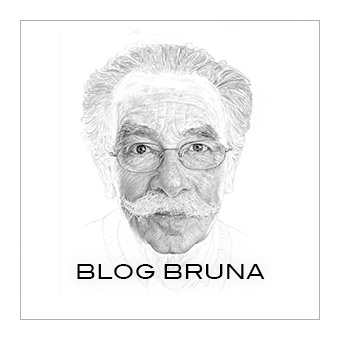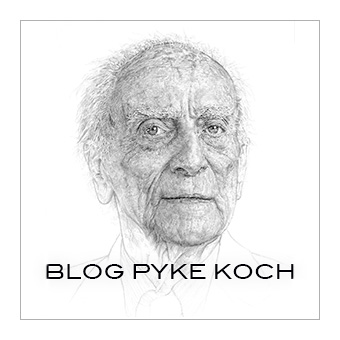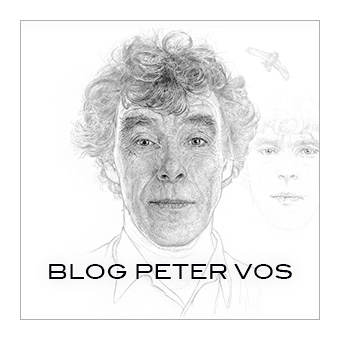The older Peter, the younger Vos, and the bird
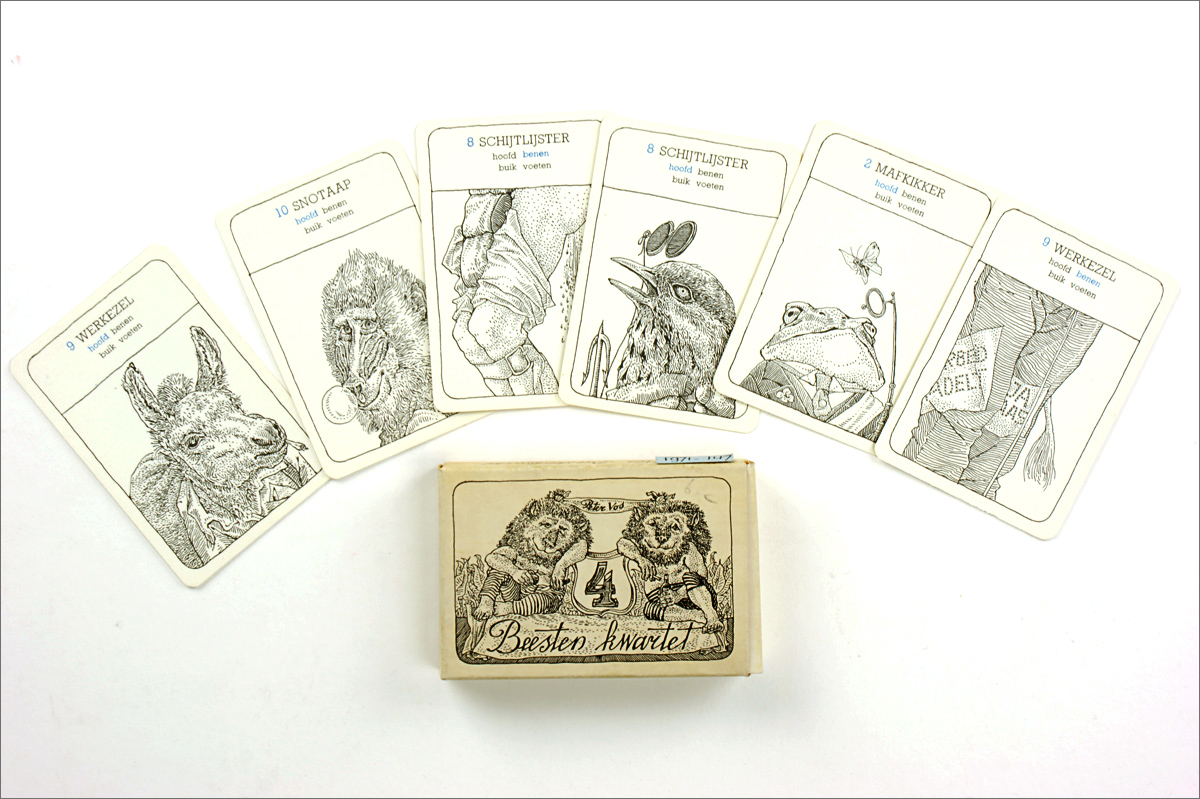
Image Thomas Rap publishing house
How do I portray, for the Centraal Museum, a Peter Vos I never knew?
- From work.
The Beast Quartet. That was something, when it entered the house in 1971. It certainly made a big impression on me as a young draftsman. And then the exciting titles of the drawings: the Sloddervos, the Schijtlijster, the Klavierleeuw, the Kloothommel ... Tantilizing types, drawn, with guts, humor, accurate, a little confrontational, a bit against civil morality, a bit tongue in cheek . Awesome! That was my first encounter with Peter Vos.
- From his DNA: Sander
In 1986 I met his son Sander by accident at a birthday party. He was spoken of with respect because he was, indeed, the son of.
When I start looking for the man Peter Vos, I therefore think first of all to visit his son Sander. In his film editor studio in Amsterdam, he tells, I listen, and look at the son. How they often went to the zoo to draw. About the detachment he had. How often he said look! You have to look!
Sander leans out the window, smokes, drinks cans of beer, and talks about his father with warmth.
- From the media
Looking for recent images of him, I find out that he didn't like to be photographed. He seems sideways, and usually not himself. Shame. Discomfort.
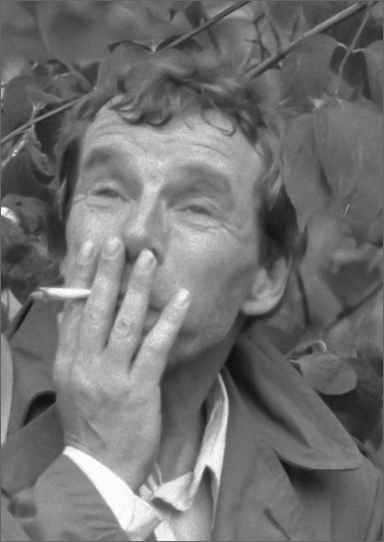
Image: Rob C. Croes.
- Films Hans Keller and David de Jongh
Then another image comes to mind from the film by Hans Keller and Aad Nuis that I have found. Somewhere in the film, just before he puts the binoculars to his eyes, Peter accidentally looks straight into the camera. Uninhibited. I would love to draw it! An open mind. Perhaps from a rowing boat in the Biesbosch. The only disadvantage of that shot: it is a blurry film image. (Here in David de Jongh's film: Bird Paradise ). But he looks so beautiful; the Peter from before his burnout .
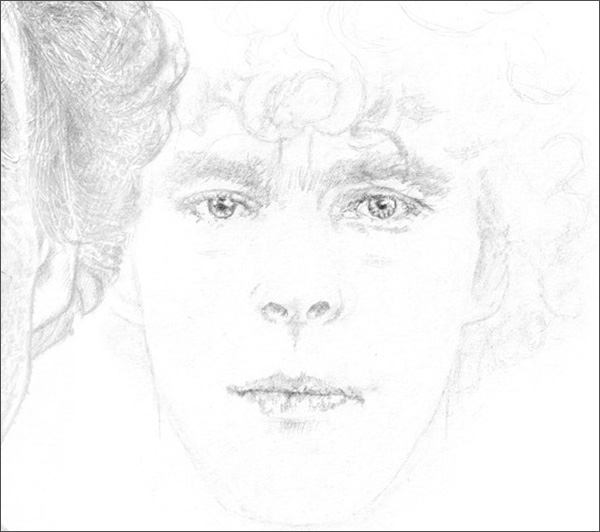
- Max Tosseram
I hear that the Utrecht photographer Max Tosseram would have a photo 'en face'. From the eighties. He shot them for a booklet with numerous Utrecht artists. And yes: that photo appears to still be there. With negative. And I can use it.
He looks a bit surprised, stunned, even freezed. He used to look that way, I hear. Uncomfortable with the direct contact, including the camera. That is in line with what Sander said about his father.
- My inner image
This portrait actually becomes a posthumous portrait. What has this image of Peter Vos built up to gradually? How Peter, due to difficulties between his parents, often sat more with friends than at home. I identify with that. And that he and his older brother cared for their father for years, before he finally died in 1955. I recognize that too. How he was taken to Artis by his teacher at the Rijksakademie to draw the animals.
Like my father took me, on the back of the scooter, to mills, farms and lakes to sit and draw together.
From how he initially assumed pretty much all the work he was offered, which caused a huge slump in 1974. In the five years that the slump lasted, he only drew a nice book together, and the lions for the sides in Vrij Nederland.
I put me in his shoes for the period that he sought a lot of peace in nature, wandered around in the Biesbosch, with his friends, a boat and binoculars.
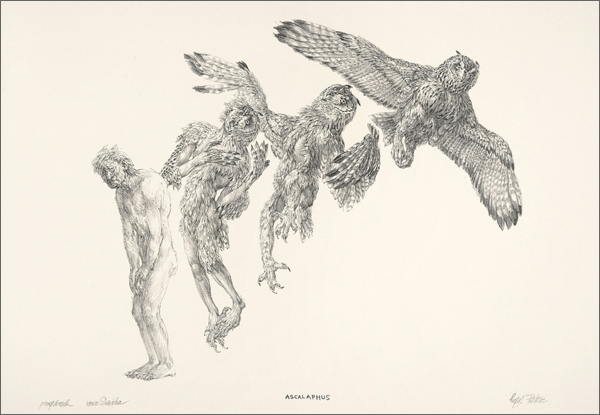
From the Peter Vos Metamorphoses: 'Ascalaphus'
And I think about his beautifully drawn metamorphoses in which he seems to have wanted to escape the heavy earthly life: the human being who gradually becomes a bird. That seems to be very much about the draftsman himself. The freedom, the inaccessibility of the universe from being an animal, to be a flying creature, against the rigid earthly.
At the same time, he also remembers the quote from Kloos: "nature is beautiful, but you need something to drink with it".
Because there was drinking and smoking, if I may believe the stories.
A kind of double image of Peter is gradually emerging. From before and after his collapse.
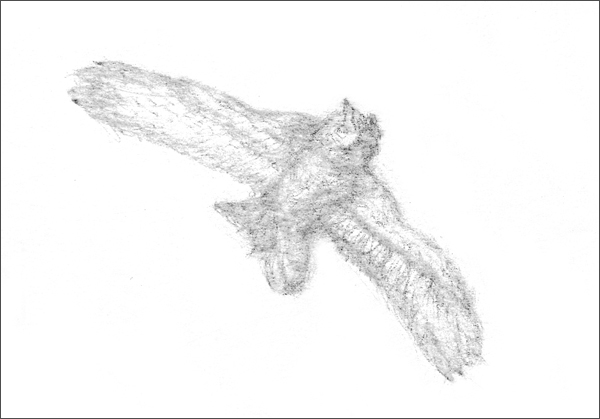
- The triangle
In the design of the portrait I find out that I want them all in it: the older Peter from 1983, and the younger Vos on the basis of the TV film by Hans Keller from 1969. I just can't escape it. He has to be there. And the flying owl flying out of freedom from his metamorphoses. That one as well.
I am looking for a composition in which the three images are in a good way to each other.
This is the result
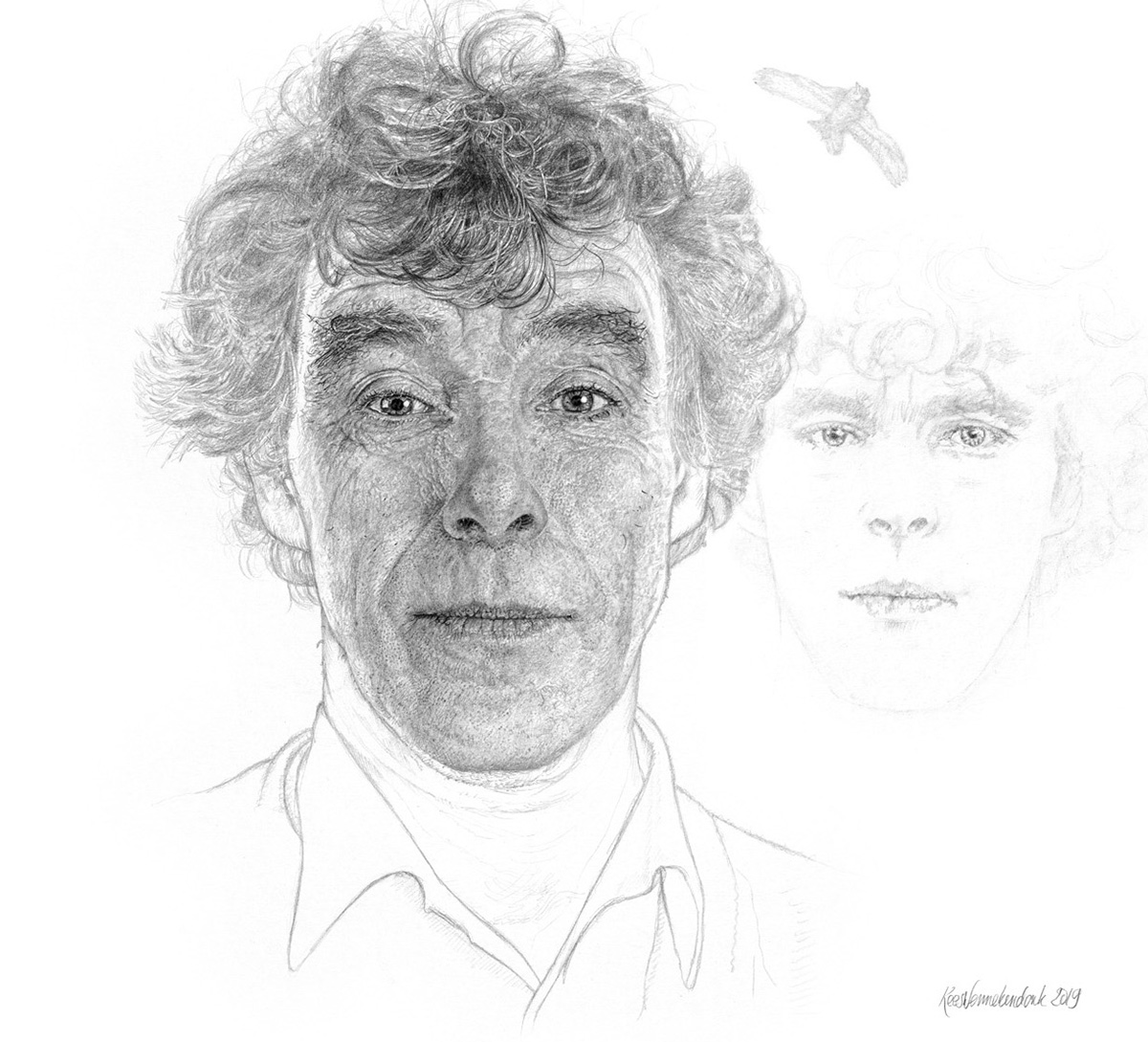

Kees Wennekendonk
Utrecht, December 20, 2019.

